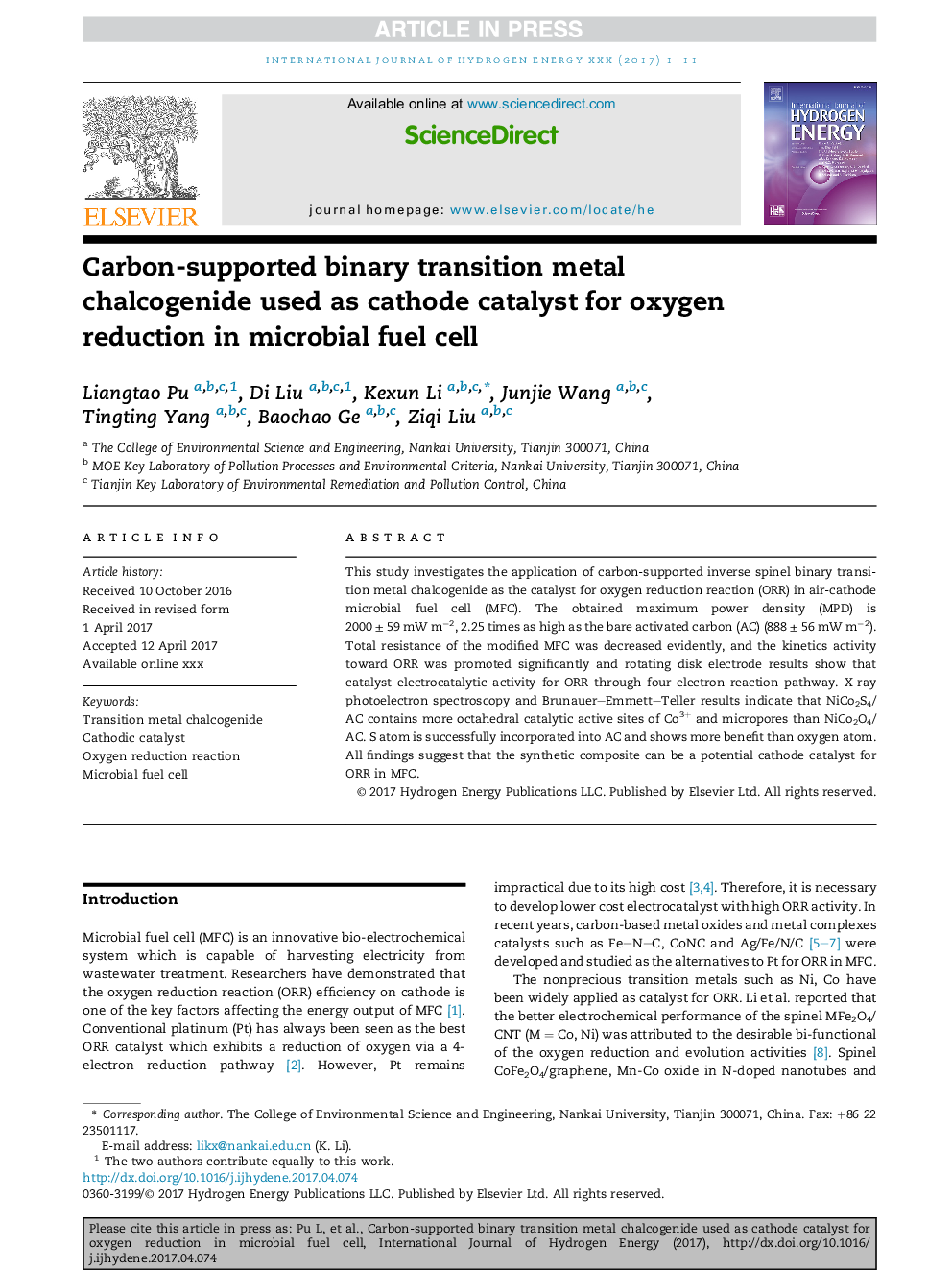| Article ID | Journal | Published Year | Pages | File Type |
|---|---|---|---|---|
| 5146953 | International Journal of Hydrogen Energy | 2017 | 11 Pages |
Abstract
This study investigates the application of carbon-supported inverse spinel binary transition metal chalcogenide as the catalyst for oxygen reduction reaction (ORR) in air-cathode microbial fuel cell (MFC). The obtained maximum power density (MPD) is 2000 ± 59 mW mâ2, 2.25 times as high as the bare activated carbon (AC) (888 ± 56 mW mâ2). Total resistance of the modified MFC was decreased evidently, and the kinetics activity toward ORR was promoted significantly and rotating disk electrode results show that catalyst electrocatalytic activity for ORR through four-electron reaction pathway. X-ray photoelectron spectroscopy and Brunauer-Emmett-Teller results indicate that NiCo2S4/AC contains more octahedral catalytic active sites of Co3+ and micropores than NiCo2O4/AC. S atom is successfully incorporated into AC and shows more benefit than oxygen atom. All findings suggest that the synthetic composite can be a potential cathode catalyst for ORR in MFC.
Related Topics
Physical Sciences and Engineering
Chemistry
Electrochemistry
Authors
Liangtao Pu, Di Liu, Kexun Li, Junjie Wang, Tingting Yang, Baochao Ge, Ziqi Liu,
